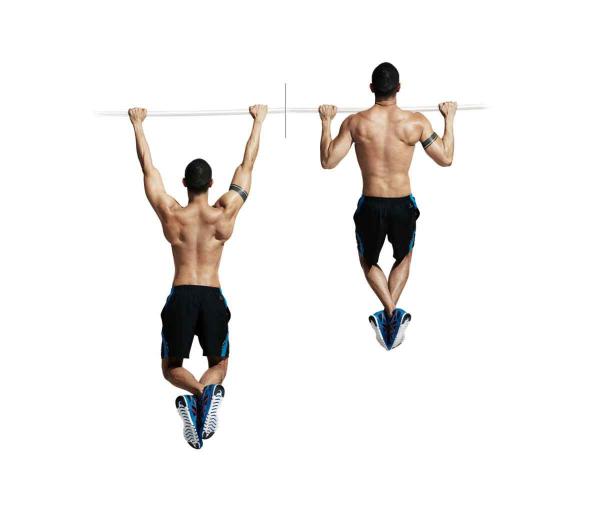Similar to my article on squat technique variations in the past, this week is dedicated to the pull up and chin up exercises. Two similar, yet different exercises with some obvious benefits and differences between the two, most notably biceps involvement with the supinated position of the forearm during the chin up. Personally, I have always thought of the chin up as more of a “beach muscle” exercise and something that I often avoided, especially in overhead athletes that already have issues with SLAP tears and the involvement of the long head of the biceps.
Photo by Jayel Aheram
Pull Up Versus Chin Up
A recent study published in the Journal of Strength and Conditioning Research showed some differences that were new to me, and may influence our choice between the pull up and chin up exercises.
The authors compared EMG activity of several muscle groups during both the pull up and chin up in 25 healthy subjects. Both exercises showed significant involvement of the latissimus dorsi, ranging from 117-130% MVIC, obviously. The chin up, as expected, had significantly higher biceps activity, however, the chin up also had significantly higher pectoralis major activity.
The pull up did have one advantage in regard to the EMG activity. Lower trapezius activity was significantly higher in the pull up versus the chin up.
So is the pull up or chin up a “better” exercise?
I guess it depends on your definition of better since neither are bad.
If you are weightlifting for good looks and to impress the ladies – looks like the chin up is best for you – high lat activity with greater biceps and pec activity.
For those worried about posture, shoulder function, and general athleticism, as well as for those that may have some shoulder pathology, the pull up may be the better option as you minimize pectoralis major activity and maximize lower trapezius muscle activity. Both are common goals when dealing with posture and upper body cross syndrome. The lower trapezius is often an area that gets weak, especially in the presence of shoulder pathology, so any exercise variation that increases lower trap involvement is a plus for me, especially when you are likely performing the exercise primarily for the latissimus.
For the athletes, especially the overhead athletes that don’t want to emphasize biceps activity especially when the body is distracting away from the body, I would say the pull up is probably better suited. Especially when you consider the above in regard to posture.
What do you think? Does this information change your perspective on the pull up and chin up exercises? What have you used as criteria to choose between the pull up and chin up?






